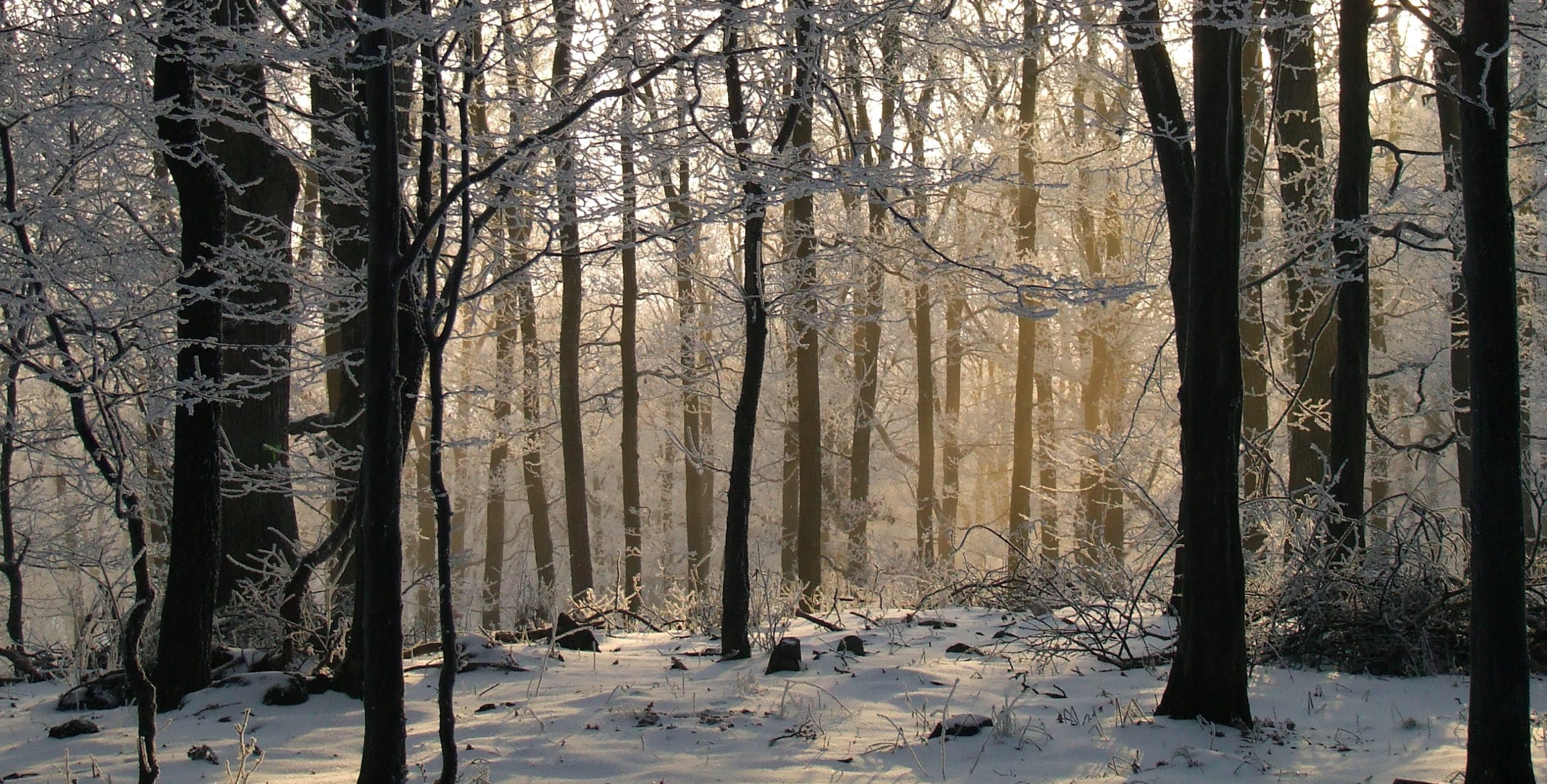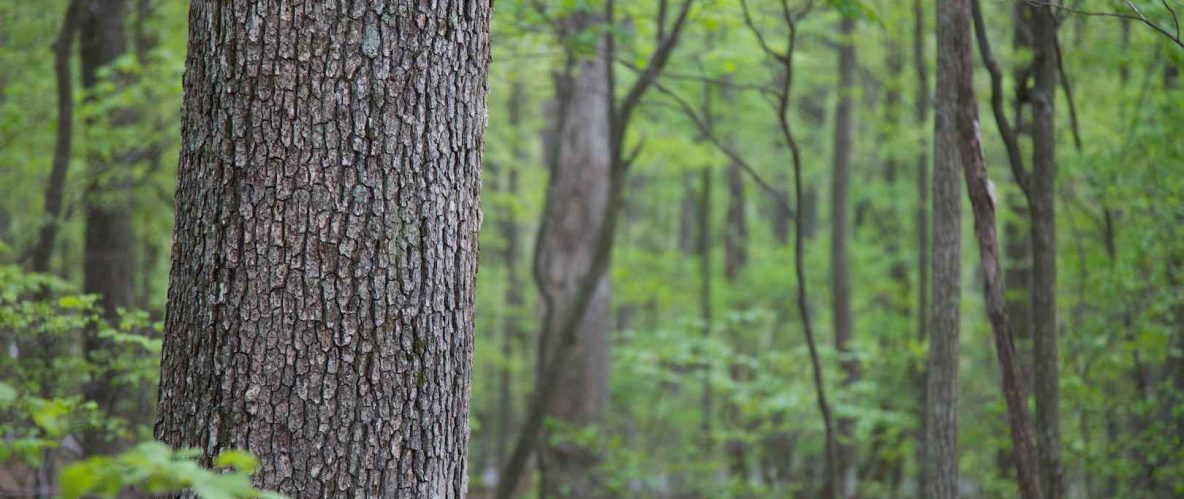Practical methods for landowners to approximating the board‑foot yield of live trees in their woods. It introduces key measurements like DBH (diameter at breast height) and total height, and explains how to apply volume estimation formulas—such as the form‑factor method and segmented frustum method—to compute cubic feet, then convert to board feet using standard conversion (1 ft³ ≈ 12 bd‑ft). It also covers stand‑level estimates using Quadratic Mean Diameter (QMD) and basal area metrics tailored to Ohio hardwood species. A regional table provides approximate board‑foot volumes for common species at typical ages/DBH sizes. While acknowledging that perfect accuracy isn’t possible, the post emphasizes that with a few basic tools and simple geometry, landowners can arrive at reasonable estimates to inform timber harvest planning or valuations.
Core Terms and Measurements
- DBH (Diameter at Breast Height): Measured at 4.5 feet above ground; critical for volume estimation formulas.
- Total Height: Typically measured with a clinometer or hypsometer; used in estimating total merchantable volume.
- Form Factor (F): A coefficient (typically 0.33–0.44) that adjusts volume calculations based on tree shape and taper.
Steps for Appraising Timber
Scaling tree volume can be confusing due to the natural contour, shape and the individual characteristics of tree growth. However, when tackled systematically, an enterprising land owner can gain a good estimate of their timber volume.
Estimating Tree Volume Simple Methods
Although there is no substitute for the expert eye that can only develop from years of practice, the process is not as mystical as many loggers would lead you to believe. With a little knowledge and some simple tools, you can get a relatively close estimate of a standing trees volume. From the volume, you can get a decent idea of the range of values this tree may be worth.
When determining board footage, you estimate the amount of lumber you can cut from a particular tree, not the amount of wood the tree contains.
Therefore, in this blog, we explicitly deal with lumber volume, which represents a very high proportion of a tree’s total value. For now, we will save the lesson on determining the volumes of cordwood and pulpwood that you can cut from a tree for another day.
In the second installment of this blog series, we will show you how to take the volume estimates we determine today and use widely available forestry data to get an idea of what your timber is worth.
Don’t worry if it’s been a few years since your high school geometry course—it is common to confuse diameter (the measure across the tree equal to twice its radius) with circumference (the measure around a tree). When someone says they have a tree that is 5 or more feet in diameter, they likely are actually referring to circumference.
In fact, the tables we’ll use in the next step only contain entries for trees at even inch markers—16 inches, 18, 20, etc.—so take your DBH measurement and round to the nearest even number. A tree that measures 18.9 inches will round down to 18 inches. A 19.6 inch tree rounds up to 20.
Mathematical Formulas for Estimating Tree Volume
1. Form Factor Method
The simplest formula using form factor is:
V = F × π × (DBH / 2)2 × Height
Core Terms and Measurements
- DBH (Diameter at Breast Height): Measured at 4.5 feet above ground; critical for volume estimation formulas.
- Total Height: Typically measured with a clinometer or hypsometer; used in estimating total merchantable volume.
- Form Factor (F): A coefficient (typically 0.33–0.44) that adjusts volume calculations based on tree shape and taper.
Where:
- V = tree volume in cubic feet
- F = form factor (commonly 0.38 for hardwoods in Ohio)
- DBH = diameter at breast height (in feet)
- Height = total tree height (in feet)
2. Frustum Method for Segmented Stems
V = (π × h × (D₁² + D₂² + D₁ × D₂)) / 12
Use this formula when breaking the tree into sections, treating each segment as a frustum (truncated cone).
3. Quadratic Mean Diameter (QMD)
QMD provides better stand-level estimates by weighting larger trees:
QMD = √(Σ(DBH²) / n)
Combine QMD with basal area to estimate stand-level timber volume.
These values represent average volumes in naturally regenerated stands. Tree spacing, site index, and thinning history all affect final yields.

Sample Volume Calculation
Beginning with an example, let’s estimate the volume of an Eastern white pine with a DBH of 14″ and height of 80 ft. Using a form factor of 0.38:
Area = π × (7 in)² = 153.9 in² ≈ 1.07 ft²
Volume = 0.38 × 1.07 ft² × 80 ft ≈ 32.5 ft³
Therefore, after converting to board feet (1 ft³ ≈ 12 bd-ft for sawlogs), the usable timber would be approximately 390 bd-ft for this tree.
Doyle Log Scale Table
- 18″ diameter, 8′ log
- 122 board feet
- 20″ diameter, 8′ log
- 153 board feet
- 22″ diameter, 8′ log
- 186 board feet
- 24″ diameter, 8′ log
- 221 board feet
- 26″ diameter, 8′ log
- 258 board feet
- 28″ diameter, 8′ log
- 297 board feet
- 30″ diameter, 8′ log
- 338 board feet

The most widely used tool for this purpose is the Biltmore stick. It’s cost-effective, easy to use in the field, and readily available through most forestry suppliers.
Average Tree Volume by Age and Species (Ohio Data)
- Northern Red Oak (40 yrs, ~12″ DBH)
- Approx. 45–55 board feet per tree
- Black Cherry (40 yrs, ~10″ DBH)
- Approx. 35–45 board feet per tree
- Sugar Maple (50 yrs, ~11″ DBH)
- Approx. 30–40 board feet per tree
- American Beech (60 yrs, ~12″ DBH)
- Approx. 25–35 board feet per tree
- White Oak (60 yrs, ~14″ DBH)
- Approx. 50–60 board feet per tree; slower growing but highly valuable
- Eastern White Pine (55 yrs, ~11.5″ DBH)
- Approx. 30–40 board feet per tree
- Mockernut Hickory (60 yrs, ~12″ DBH)
- Approx. 30 board feet per tree (~1 m³/ha annual growth)
- Pignut Hickory (60 yrs, ~17″ DBH)
- Approx. 40–50 board feet per tree
- Shellbark Hickory (60 yrs, ~15–18″ DBH)
- Approx. 40–50 board feet per tree
- Yellow-poplar (40 yrs, ~8.4″ DBH)
- Approx. 23 board feet per tree
- Sweet Buckeye (50 yrs, ~10″ DBH)
- Approx. 20–30 board feet per tree
These values represent average volumes in naturally regenerated stands. Tree spacing, site index, and thinning history all affect final yields.
Modern Tools and Resources
- USFS National Volume Estimator Library (NVEL)
- Measuring Tree Volume from The Ohio State University
- Ohio Timber Works Glossary of Terms
These tools can further refine your estimates, especially when managing a mixed-age or mixed-species stand.


Comments 3
Judy Graves I have 8 large oak trees would like sell.
I’m having 28 acres harvested is it more beneficial to take the lump sum they offer or by loads taken out?
There are a lot of logistics involved with moving logs. If you still own the logs, we would recommend having three unaffiliated timber companies make bids.